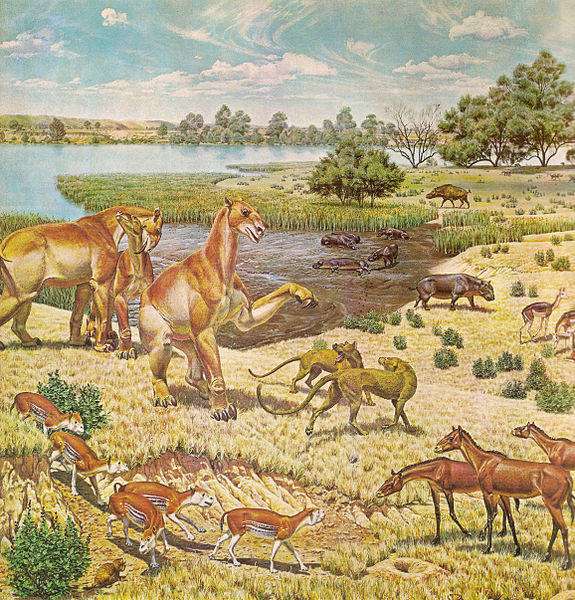Ebola and Marburg are Millions of Years Old, Not Thousands
 Ebola and Marburg are 16 to 23 million years old, not thousands of years old as once thought, according to a recent PeerJ paper.
Ebola and Marburg are 16 to 23 million years old, not thousands of years old as once thought, according to a recent PeerJ paper.
The new research also indicates that while Ebola and Marburg are both filoviruses, they diverged from each other millions of years ago. This means they may be less alike than thought, which could impact research on therapies.
This is of considerable interest, said Robert Gifford, senior research fellow at University of Glasgow Center for Virus Research. An expert in viral evolution, he was uninvolved in the PeerJ study. While Gifford long suspected Ebola was ancient, he didn’t know Ebola and Marburg diverged so long ago.
“These viruses are often mentioned in the same breath,” Gifford told Bioscience Technology. But the new research “indicates they have been, in fact, diverging for many millions of years. Based on this evidence, Ebola and Marburg seem likely to be quite different beasts, which is quite different from what we might have expected in the absence of fossil evidence.”
RELATED: Marburg, Ebola’s Relative, Cured in Monkeys
Noting that the study compared modern filovirus DNA with endogenous filovirus gene-like RNA elements embedded in ancient rodent fossil genomes, lead author and University of Buffalo biologist Derek Taylor told Bioscience Technology: “It is interesting that what looks like blocks of text with four letters of sequence can provide important insights into the long-term evolution and interactions of viruses and their hosts. Because viruses don’t yield real fossils or truly ancient sequences, this aspect of viral biology was completely missing for many groups of viruses. It turns out that when we study only today’s known viruses, we can grossly underestimate viral ages, diversity, and interactions with hosts.”
His team’s work shows, he said, that we don’t need “the complete ancient or extinct viruses” to understand them, just as “we needn’t ignore the important biological insights provided by dinosaur fossils just because we currently lack a Jurassic Park.”
 A million-year-old prescription
A million-year-old prescription
All that is needed is key viral sequences conserved in mammalian genomes— and for what may be a fascinating reason. Ancient Ebola and Marburg sequences may have been conserved in the genomes of the mammals they infected to act as natural vaccines. Manmade vaccines work by introducing non-infectious bits of viruses to the human immune system, so the immune system will build up defenses against future invasions.
Studies like Taylor’s suggest that, all along, we may have simply been copying a million-year-old prescription straight out of nature’s apothecary.
“Most think that endogenous viral genes spread in host populations because they gave the host a fitness advantage,” Taylor said. “The simplest explanation is antiviral.”
Ebola once believed to be 10,000 years old
It was once thought Ebola arose with the birth of agriculture 10,000 years ago. But the new study reveals that remnants of filovirus-like genes have been found in far more ancient rodent fossils. In fact, the fossil gene VP35 appeared in the same spot in the genomes of four different rodent species: two hamsters and two voles.
This indicates that the virus was likely acquired in or before the Miocene Epoch, which was before the time when these rodents evolved into distinct species, 16 to 23 million years back. Thus, the known filovirus family is apparently at least as old as the common ancestor of hamsters and voles. The rodents have billions of base pairs in their genomes. It is near-impossible that a viral gene could insert itself in the exact same position in different species at varying times.
RELATED: ZMapp: Best Anti-Ebola Treatment Yet
Furthermore, the genetic elements in the VP35 fossil were more like Ebola than Marburg. This suggested the lines leading to these viruses began diverging from each other in the Miocene.
The new work is an extension of Taylor’s prior work with senior author and University of Buffalo Professor of Biological Sciences, Jeremy Bruenn. In that work, the two analyzed viral fossil genes, and estimated that all filoviruses were more than 10 million years old.
“Three other labs independently published similar findings,” Taylor told Bioscience Technology. “This group of papers appeared to change the way many scientists thought about how hosts interact with filoviruses.”
Still, that earlier work used fossil genes distantly related to Ebola and Marburg, unlike this study.
“The authors have described a relatively large number of new endogenous filoviral elements,” Gifford told Bioscience Technology. “And what’s particularly interesting are the phylogenetic trees, which show elements from Cricetid rodent genomes splitting the Ebola and Marburg lineages.”
The new phylogenetic trees, “in combination with the dates provided by orthologous elements,” offer good evidence that Ebola and Marburg are ancient, Gifford said, and have been different for millions of years.
Therapeutic implications
This could affect some therapies for Ebola victims in Africa, which now number more than 13,000. Some drugs being fast-tracked to aid the victims have attracted interest because they work on Marburg, considered similar to Ebola. Indeed, TKM-Marburg captured world attention in August because it cured 16 of 16 monkeys of Marburg.
RELATED: Two Anti-Ebola Vaccines in Historic Race
A TKM-Ebola drug has now done well preclinically, and after being on hold for patients, was recently approved by the World Health Organization (WHO) for use on humans on an emergency basis. Still, the new study may cause scientists to look harder at some drugs and vaccines. Indeed, the Buffalo team found a filoviral insert “that interrupts an important regulator of the innate antiviral response,” the PeerJ report said. This “informs hypotheses regarding the possible biological significance to the mammalian host of such inserts.”
Said Taylor: “It wouldn’t be surprising if therapies based on such divergent viruses didn’t work, or worked in different ways. Our results mean that it may be possible to find relevant genetic information by comparing the ‘fossil’ versions of viral genes that are more closely related to Ebola viruses. Someday it may even be possible to reconstruct ancestral proteins or motifs based on the ‘fossil’ versions.”
If their work is correct, the team’s report concluded, “then the divergence of marburgviruses from other filovirids (ebolaviruses and cuevaviruses) must [be] at least as old as the Miocene. This age is orders of magnitude older than previously thought and will likely aid in understanding the comparative biology of filovirids. The differing genome architecture, transcriptional editing and immunological reactivity of cuevavirions, ebolavirions and marburgvirions had a much longer time to evolve than the rise of agriculture.”

